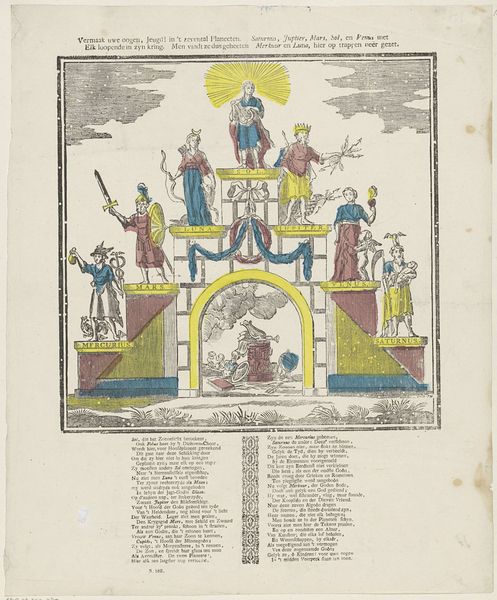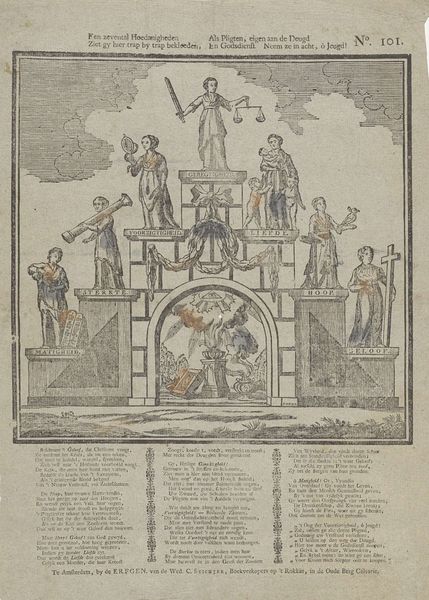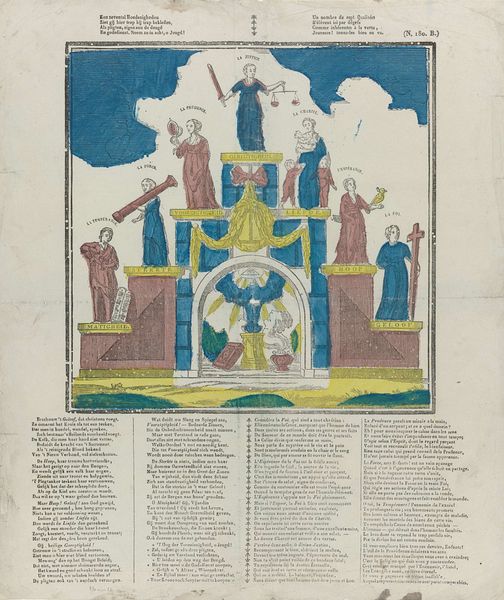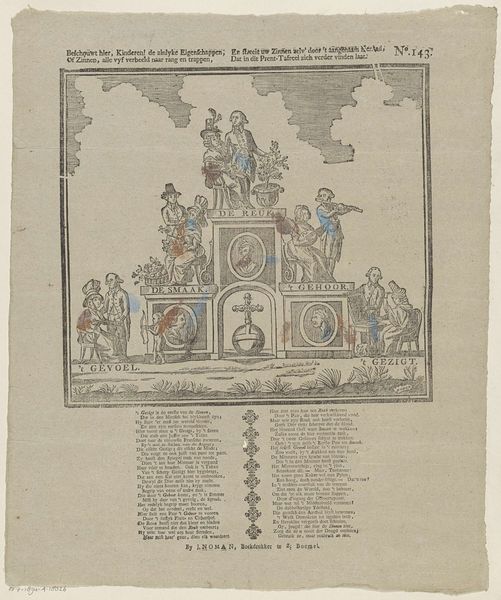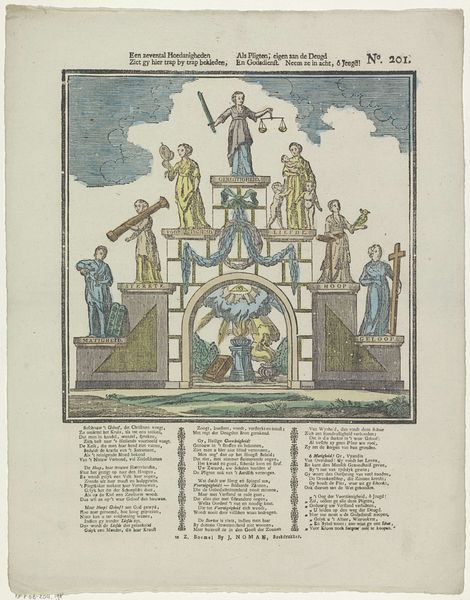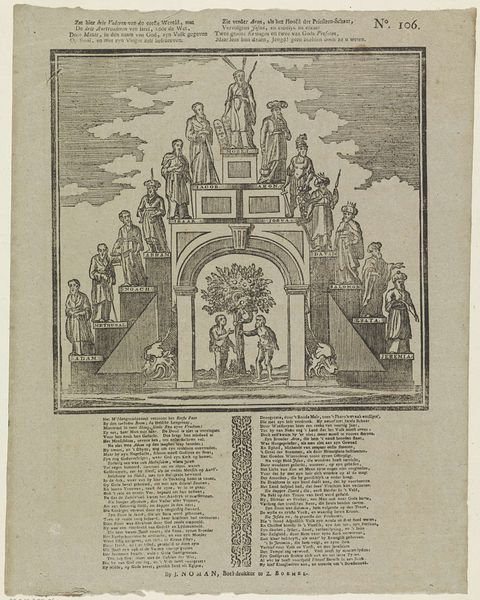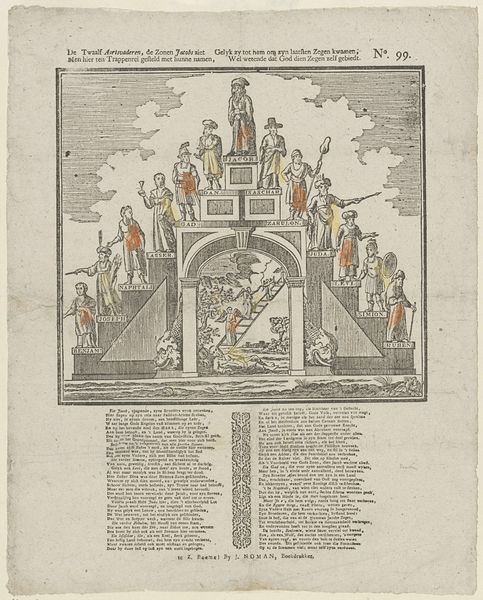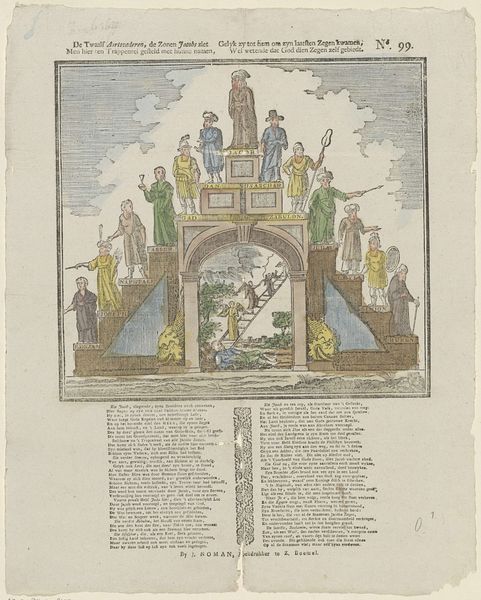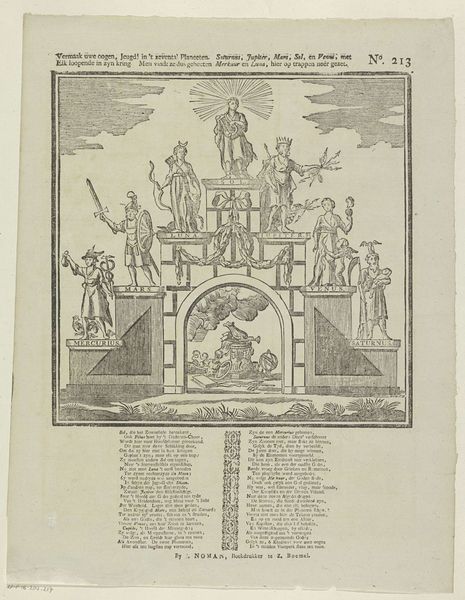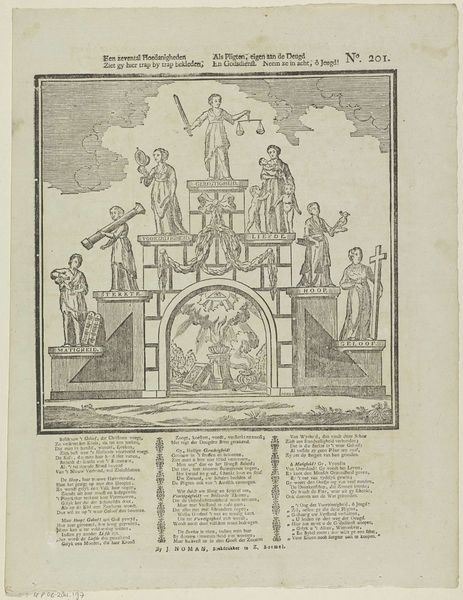![Vermaak uwe oogen, jeugd! in 't zevental planeeten. / Elk loopende in zyn kring. / Men vindt ze dus geheeten [(...)] by J. Robyn](/_next/image?url=https%3A%2F%2Fd2w8kbdekdi1gv.cloudfront.net%2FeyJidWNrZXQiOiAiYXJ0ZXJhLWltYWdlcy1idWNrZXQiLCAia2V5IjogImFydHdvcmtzL2UyM2E2NzQzLTM0ZTMtNDNiNi1hYmJmLTE1NDZlZTcyNWRlMS9lMjNhNjc0My0zNGUzLTQzYjYtYWJiZi0xNTQ2ZWU3MjVkZTFfZnVsbC5qcGciLCAiZWRpdHMiOiB7InJlc2l6ZSI6IHsid2lkdGgiOiAxOTIwLCAiaGVpZ2h0IjogMTkyMCwgImZpdCI6ICJpbnNpZGUifX19&w=3840&q=75)
Vermaak uwe oogen, jeugd! in 't zevental planeeten. / Elk loopende in zyn kring. / Men vindt ze dus geheeten [(...)] 1856 - 1900
0:00
0:00
Dimensions: height 394 mm, width 320 mm
Copyright: Rijks Museum: Open Domain
Curator: Well, here we have a fascinating print, likely produced between 1856 and 1900. It’s entitled "Vermaak uwe oogen, jeugd! in 't zevental planeeten...", which loosely translates to “Entertain your eyes, youth! with the seven planets…” Currently residing in the Rijksmuseum, this engraving by J. Robyn is quite the visual feast. What's your first take? Editor: My eyes are certainly entertained! It's…charmingly awkward, isn’t it? All these figures stacked on top of each other like celestial pancakes. I find the almost naive execution quite endearing, there's an appealing honesty to the depiction. Curator: Indeed. The layering and symbolic representation connect directly to Baroque sensibilities, especially the era's fascination with allegories and its attempt to illustrate complex cosmological ideas through familiar, human figures. Notice how the planets are personified, each with distinct attributes and positioned within a structured hierarchy. Editor: Exactly! And there’s something theatrical about the whole composition. It’s like a stage set, a performance. I keep imagining someone pointing at each figure and reciting those Dutch verses underneath… it feels participatory. Curator: These prints had a function beyond aesthetics, certainly. They were didactic tools meant to instruct. This engraving serves as both entertainment and instruction about the order of the universe, presented in a digestible format accessible to the common viewer. This form of accessible education served as an empowering force that contributed to greater overall social advancement and wider sharing of knowledge. Editor: Education as entertainment, quite brilliant. And also visually poetic, really. The slight wonkiness of the lines, the almost pastel-like quality of the coloring… it gives the impression of a child’s colouring book version of the cosmos. I feel a deep-seated tenderness for this type of earnest human ambition. Curator: Looking closer, we can see how prints such as these were distributed and encountered during this era. Inexpensive methods such as engraving meant these artworks were sold to broader markets than ever, but these cheap methods also gave the prints a disposability which made their impact short-lived as people acquired later, fresher versions. This tension between the permanence of its images and its material disposability makes it feel quite precious and thought-provoking when we now encounter them in institutions such as this. Editor: Absolutely. In the end it gives you something lovely and accessible to meditate on – to engage one’s sense of wonder while appreciating how even earlier eras were trying to get their heads round what lay beyond the visible… I suppose that human yearning makes art feel quite timeless. Curator: Precisely, a testament to humanity's perennial quest for knowledge and our desire to represent the unseen. A quite powerful picture.
Comments
No comments
Be the first to comment and join the conversation on the ultimate creative platform.
